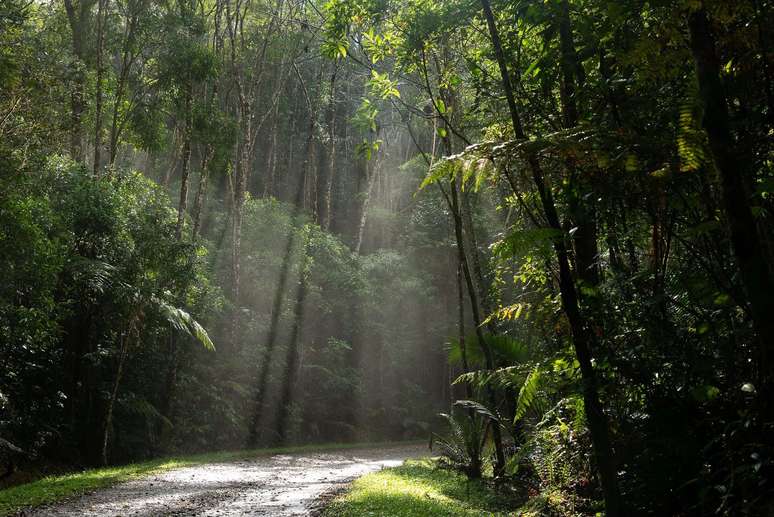The park is located 115 km from the capital Sao Paulo […]
Recognized by UNESCO’s Man and Biosphere Program as an outpost of the Atlantic Forest Biosphere Reserve, Parque das Neblinas is an environmental reserve of seven thousand hectares of forest in various stages of regeneration, in Mogi das Cruzes.
For exactly 20 years this area of Suzano, managed by the non-profit organization Instituto Ecofuturo, has offered ecotourism activities, scientific research, environmental education, forest management and restoration.
And it doesn’t even feel like the nervous capital of South America’s largest city is right there, 115 kilometers away.
To celebrate two decades of existence, when the park was inaugurated after a long work of managing the eucalyptus, conserving the springs and creating an environmental reserve, Parque das Neblinas recently announced the launch of a series of videos.
The proposal is to give voice to the people who contributed to building its history, sharing memories, experiences and stories that highlight the transformative impact of the park on the territory and on the lives of those who were directly involved in its journey.
The series will be organized into thematic blocks that address relevant aspects of Neblinas’ journey, such as “From Regeneration to Conservation,” with stories about efforts to regenerate native forests; “Educating about nature”, on environmental education and awareness work; and “Conservation that moves the economy”, which will bring examples of bioeconomy and sustainable entrepreneurship.
“I usually say that the park is just the park because of the people who have already passed and pass through here”, says Michele Martins, sustainability analyst at the Future Institute, in the opening episode of the video season.
What to do at Parque das Neblinas
Between the municipalities of Mogi das Cruzes and Bertioga, Parque das Neblinas is located in an ancient area devastated by coal production, currently one of the largest private reserves of the Atlantic Forest and a buffer zone of the Serra do Mar State Park.
Visitors can enjoy ecotourism activities for all visitor profiles, such as self-guided trails and canoeing on the Itatinga River.
Cycle tourism
With your own bicycle or rented on site, this 10 kilometer itinerary can be combined with swimming in the Itatinga River and visiting Cachoeira da Pedra Riscada.
Canoe
There are 530 sources, but it is on the Itatinga river that the scenic canoeing takes place in the calm waters of this river which originates within the park, cuts through the Serra do Mar and heads towards Bertioga, a municipality on the coast of São Paulo.
Canoeing in inflatable kayaks is a one-mile activity that passes through isolated areas and small rapids, often called waterfalls.
Self-guided routes
They can take place on Saturdays and Sundays, from 8.30am to 5pm, upon reservation.
Options include the Brejo Trail (360 meters long and easy), Inox Trail (590 m/easy), Lava Pés Trail (650 m/easy) and Cachoeira Trail (990 m/easy).
During the visit, the Travel by fare discovered the Trilha das Antas (1,950 metres), a self-guided walk of low difficulty, connected by suspension bridges that give access to other paths.
Monitored routes
They can take place from Tuesday to Sunday, from 8.30am to 5pm, upon reservation.
The Pedra Riscada Path is 10 kilometers long (return) and has a medium level of difficulty, passing through the ancient path dating back to the times of eucalyptus cultivation in the area and the Pedra Riscada Waterfall, whose name refers to the small veins of molten quartz between the rocks, with a small waterfall and a pool for swimming.
The Mirante Trail begins on an ancient road in the native Atlantic Forest, rich in ferns and microorchids, until arriving at the Itatinga River Dam, from where you can see the coast. It’s 11 kilometers of medium level walking.
Source: Terra
Ben Stock is a lifestyle journalist and author at Gossipify. He writes about topics such as health, wellness, travel, food and home decor. He provides practical advice and inspiration to improve well-being, keeps readers up to date with latest lifestyle news and trends, known for his engaging writing style, in-depth analysis and unique perspectives.









